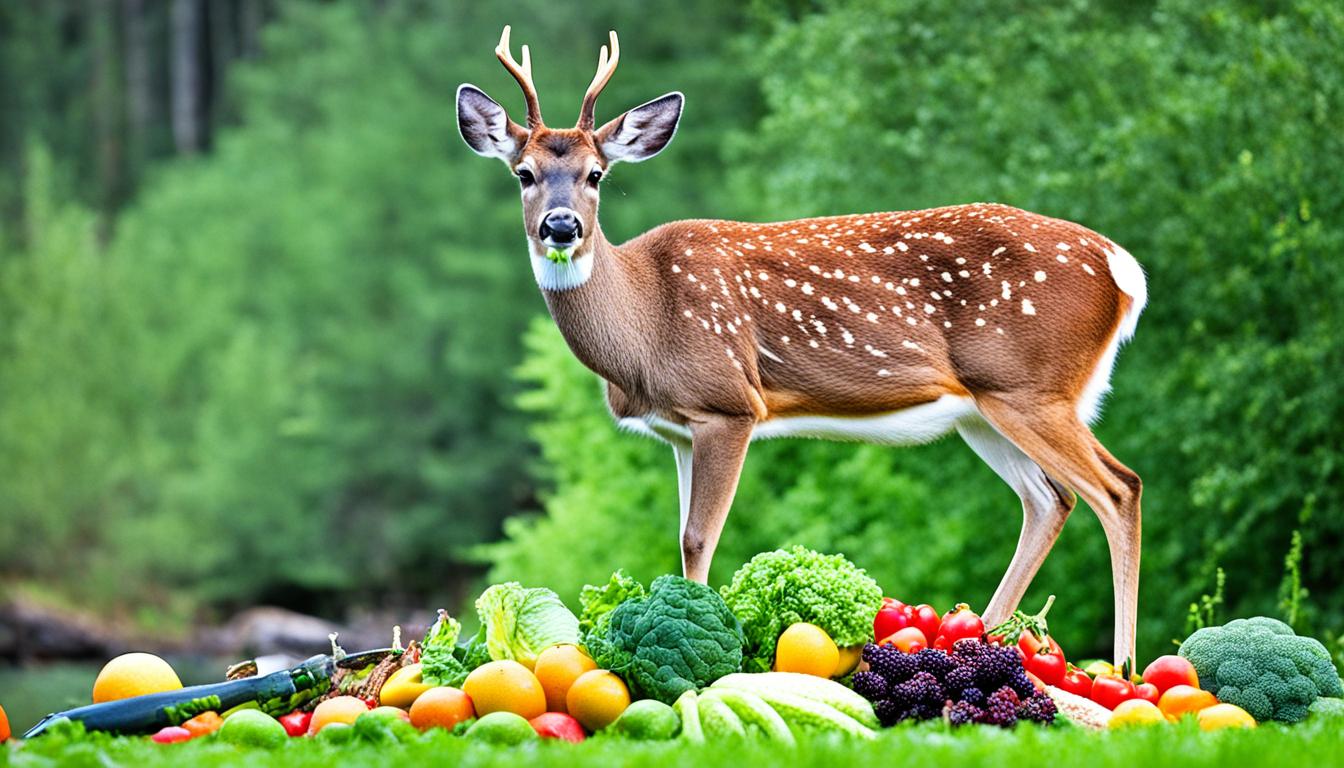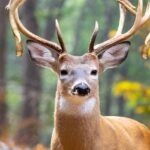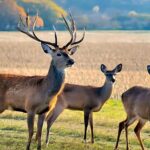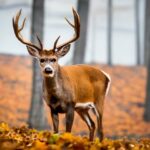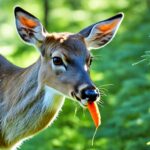Deer are fascinating creatures that have long captured our attention with their graceful movements and gentle nature. One common question that often arises is whether deer eat meat or if they are strict herbivores. In this article, we will delve into the dietary habits of deer and uncover the truth behind their herbivorous nature.
Deer are classified as herbivores, meaning that they primarily consume plant-based material as their main source of nutrition. Their diet consists of leaves, grass, twigs, and bark from a variety of tree and plant species. These gentle creatures have evolved to thrive on a diet rich in plant material, which provides them with the necessary nutrients to survive and thrive in their natural habitat.
While deer are predominantly herbivorous, there have been rare instances of them venturing into the realm of meat-eating. These observations typically occur when there is a scarcity of their preferred plant-based food or when there is a nutritional imbalance in their diet. In such circumstances, deer may resort to consuming meat or carrion as an alternative source of sustenance.
Content Highlights
ToggleKey Takeaways:
- Deer are primarily herbivores, with a diet consisting of plant-based material.
- Instances of deer consuming meat are rare and driven by specific circumstances such as food scarcity.
- Deer’s primary diet includes leaves, grass, twigs, and bark from various tree and plant species.
- Understanding the occasional meat-eating behavior of deer provides insights into their adaptability and opportunistic nature.
- The natural diet of deer should be regarded as primarily plant-based.
Deer Dietary Habits and Nutritional Needs
Deer are fascinating herbivorous creatures that have adapted to a diverse range of environments. Their food habits and feeding behavior are closely linked to their nutritional needs and the availability of resources in their ecosystem.
Deer primarily consume various plant materials, including grasses, buds, acorns, leaves, and fruits. They also incorporate lichen and other vegetation into their diets. These plant-based diets provide deer with essential nutrients such as proteins, minerals (such as calcium and phosphorus), and vitamins.
The food preferences of deer can vary depending on the season. During spring and summer, their diets focus on green foliage, tender shoots, and grasses, which are abundant during these warmer months. In autumn, deer shift their attention to acorns, pumpkins, corn, apples, and soybeans, taking advantage of the seasonal availability of these nutritious food sources.
However, when food becomes scarce in winter, deer display remarkable adaptability in their feeding behavior. They resort to browsing on woody vegetation, tree bark, pine needles, twigs, and stems as alternative sources of sustenance.
Understanding the dietary habits of deer is crucial for assessing their nutritional needs and overall well-being. By consuming a diverse range of plant materials, deer can obtain the necessary energy and nutrients to support their growth, reproduction, and survival in their natural habitats.
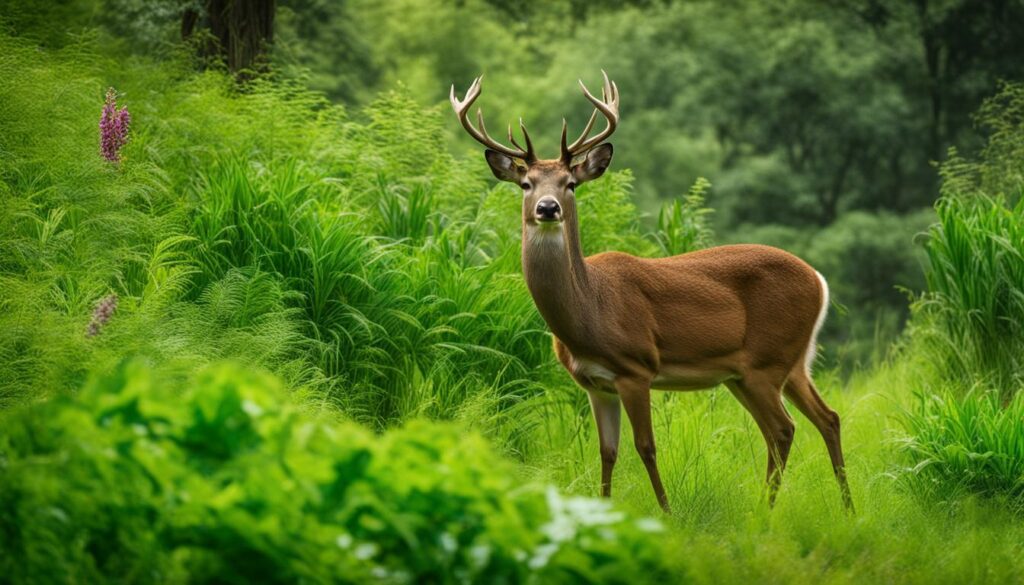
As seen in the image above, deer meticulously browse through the vegetation, aligning with their instinctual feeding behavior. This behavior allows them to access a variety of plants and maximize their nutrient intake.
In summary, deer demonstrate remarkable adaptability in their food habits and feeding behavior. While their primary diet consists of plant materials, they are resourceful and opportunistic, adjusting their diets to match the seasonal availability of resources. By exploring a wide range of plant-based options, deer can meet their nutritional needs and thrive in various habitats.
Unusual Dietary Observations and Misconceptions
While deer are primarily herbivores, there have been rare observations of them eating meat. These instances include consuming eggs, bones, carrion, small mammals, fish, frogs, and even birds. However, these behaviors are considered unusual and do not represent a regular characteristic of a deer’s diet.
Contrary to the common misconception that deer are strict herbivores or vegans, they can be regarded as opportunistic omnivores. This means that they have the ability to adapt their diet based on specific circumstances, such as food scarcity. While they primarily rely on plant material for sustenance, deer may occasionally consume meat when plant-based food sources are limited.
Deer have been observed consuming various types of meat, including small mammals, fish, and even birds. Although these behaviors are not the norm for deer, they highlight their opportunistic feeding habits and ability to adapt to different food sources when necessary.
It is important to note that deer primarily rely on plant material and should be regarded as herbivores. The occasional consumption of meat does not make them carnivorous by nature. Instead, it highlights their flexibility and resourcefulness as they seek out alternative food sources when needed.
To summarize, while deer are primarily herbivores, there have been rare instances of them consuming meat. However, these behaviors are atypical and do not represent the majority of their diet. Deer should be considered opportunistic omnivores, capable of occasionally incorporating meat into their diet based on specific circumstances.
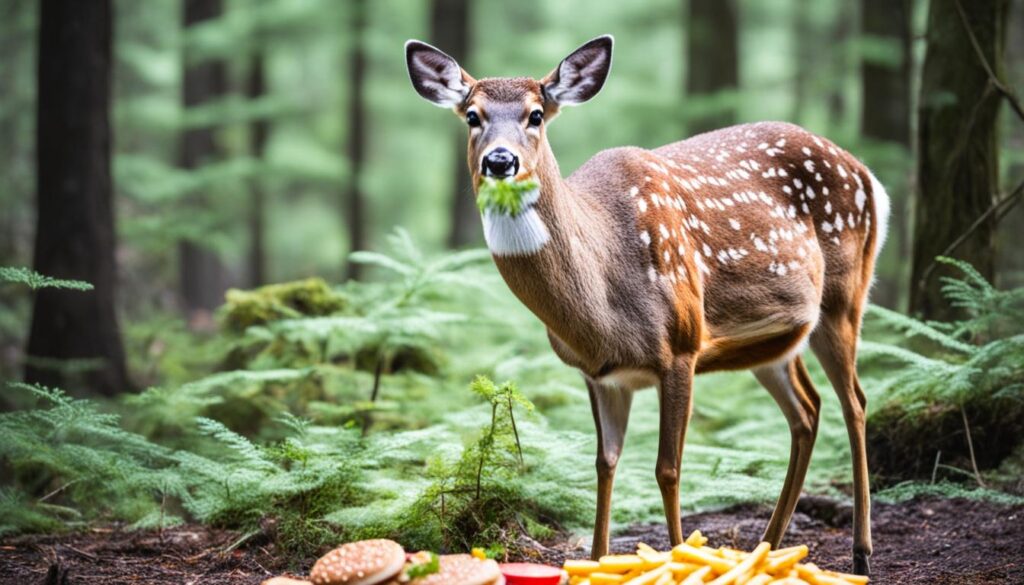
Stay tuned for the next section where we dive into the various factors that influence the dietary habits and nutritional needs of deer.
Conclusion
In conclusion, deer are primarily herbivores with a physiology optimized for extracting nutrition from plant material. However, there have been rare instances of them consuming meat, driven by specific circumstances such as food scarcity. These observations provide valuable insights into the adaptability and opportunistic nature of deer.
Nevertheless, it is important to acknowledge that the natural and primary diet of deer consists of plant material. They should be classified as herbivores rather than carnivores. While occasional meat-eating behavior may occur, it is not a regular characteristic of their feeding behavior.
Further research is necessary to investigate the prevalence and impact of meat consumption among deer populations. Understanding the dynamics of deer feeding behavior and diet is crucial in order to conserve their natural habitats and manage their populations effectively. Additionally, studying the potential role of meat-eating behavior in disease transmission can contribute to our understanding of wildlife health and ecosystem dynamics.
- California Deer Hunting Guide: Seasons, Rules, Permits, and More - 26 June 2024
- Arkansas Deer Season 2024 [Schedules, Licenses, Bag Limits & More!] - 26 June 2024
- 2024 Arizona Deer Season New Dates & Rules! - 25 June 2024
